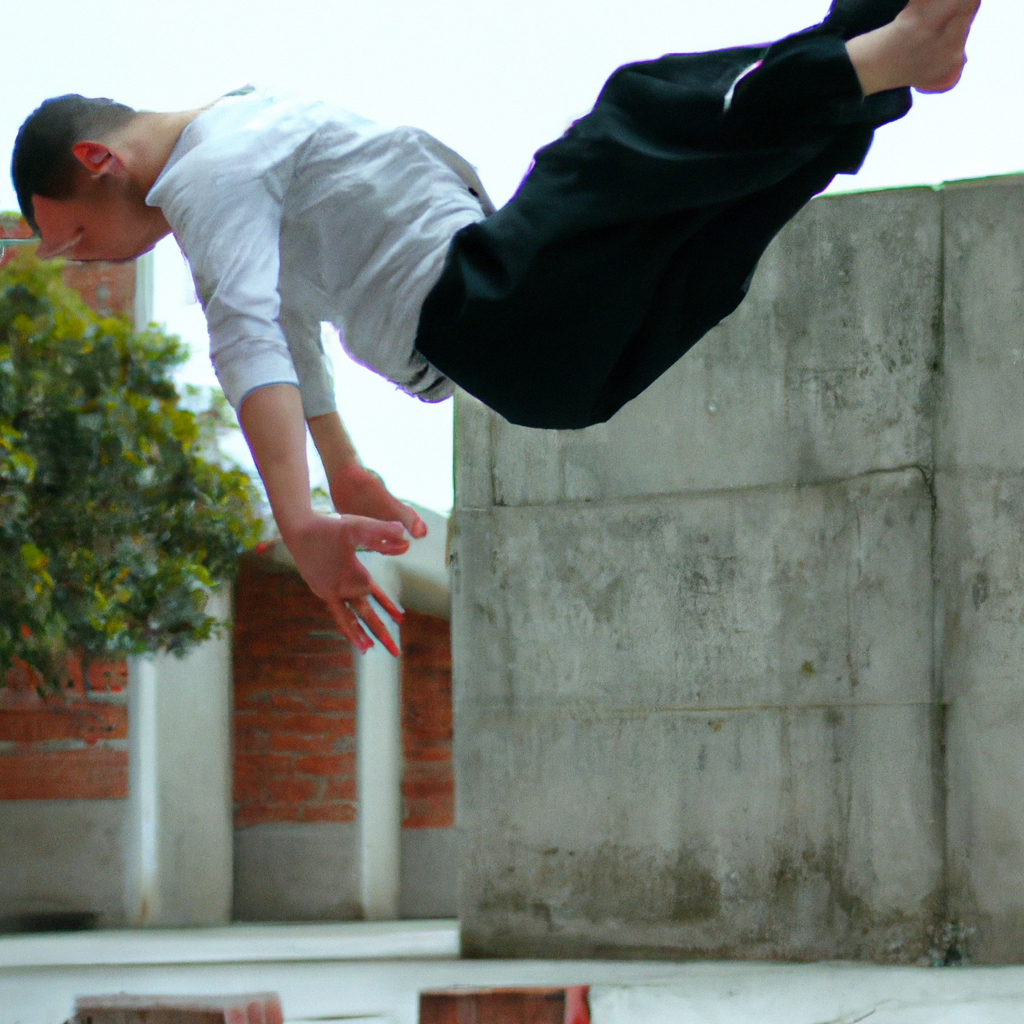Introduction
Parkour is a discipline that emphasizes fluidity and precision execution. Parkour is a movement art that combines a variety of techniques to help practitioners overcome obstacles and move with grace and power. Parkour flips are a well-known move that continues to amaze audiences all over the world. This article will cover everything you need to know about parkour flips.
Understanding Parkour Flips
Before we get into the details of parkour flips, we need to know what we are talking about. A flip is simply a rotation of the body about one or more axes. However, flips have a specific meaning in the context of parkour. They are a form of acrobatic movement that allows practitioners navigate obstacles in unconventional ways, sometimes even using gravity to their benefit. Parkour flips can be seen as both an expression of artistic creativity, and a practical tool to overcome physical barriers.
Parkour Flips: What are the Different Types?
Parkour flips come with a variety of technical and difficulty levels. These are some of the most popular types of parkour flips:
Backflip
The most famous parkour flip is the backflip. It requires the practitioner to jump backwards in order to complete a full rotation. This move is best performed on flat ground but can also be done off of rails, walls, or ledges.
Frontflip
The frontflip is a variation on the backflip. It requires the practitioner to jump forwards in order to complete a full rotation. This move, like the backflip can be performed on either flat ground or over obstacles.
Sideflip
Sideflip is another parkour move that requires the practitioner jump to one side and perform a complete rotation. This move is best performed on flat ground but can be done off of obstacles with some practice.
Wallflip
The wallflip, a more advanced parkour move, requires the practitioner to jump at a wall and push off with their feet. They then perform a backflip or frontflip while in mid-air. This move can be performed on any vertical surface that is fast enough and confident.
The Psychology of Parkour Flips
The psychological aspect of parkour flips is one of the most fascinating. Flips are more difficult than other parkour movements like vaults and climbs. They require mental focus and commitment, which can be difficult to attain. Flips can be dangerous and could cause injury if done incorrectly.
Overcoming Fear
Parkour flippers must learn to overcome their fear in order to be successful. This involves developing confidence in one’s physical abilities and trusting one’s instincts and training to guide them through difficult situations. This can be a lengthy and difficult process but it is necessary if a practitioner wants master flips.
Mental Preparation
Mental preparation is another important aspect of parkour flips. Mental preparation is essential for parkour flippers. They must be able visualize the movements with precision and detail in order to avoid making mistakes and increase their chances to succeed. This mental preparation can include techniques such as visualization or meditation that can help practitioners remain focused and calm under pressure.
Parkour Flips Training
Parkour flip training requires patience, discipline, and the willingness to learn from your mistakes. To improve their flip skills there are several key steps practitioners can follow:
Develop Strength and Power
Parkour flips require explosive power and strength in the legs, core and upper body. These attributes can be developed through exercises such as plyometrics and weightlifting.
Practicing Technique
Parkour flip training also requires that you practice technique. Through drills and exercises, practitioners can refine their movements and work on key elements like timing, rotation, landing, and landing.
Take Risks
Parkour training requires that you are willing to take risks and push yourself beyond your comfort zone. This is especially true for parkour flips which require a high level of commitment and confidence. To master this discipline, practitioners must be willing and able to push their limits, try new things, learn from their mistakes, and take risks.
Parkour Flips: The Art of Parkour
Parkour flips go beyond acrobatics. They are a way to express creativity, beauty and fluidity. A flip can transform any obstacle into a canvas for artistic expression if executed correctly. Here are some key ingredients to creating a beautiful and efficient flip:
Rhythm and flow
Parkour flips should be performed with a sense rhythm and flow. The practitioner should seamlessly blend into the environment while maintaining the momentum of their movements.
Style and aesthetics
Parkour flips, like any art form is open to interpretation and personal style. Practitioners can create their own style by trying out different types of flips, adding flourishes and variations, and exploring new ways to incorporate personal style into their movements.
Creativity, Innovation
Parkour flips can be a challenge to creativity, innovation, and even luck. Parkour practitioners can push the boundaries by trying new types of parkour flips, combining multiple moves in seamless sequences, or discovering new ways to navigate their environment.
Conclusion
Parkour flips are an exciting component of this discipline. They offer practitioners a unique way navigate obstacles and express their creativity. Parkour flips offers a wide range of challenges and opportunities for both beginners and advanced practitioners. The key to mastering this dynamic art form of parkour flips is dedication to training, willingness to take risks and a deep appreciation for the beauty and fluidity of movement.

Leave a Reply